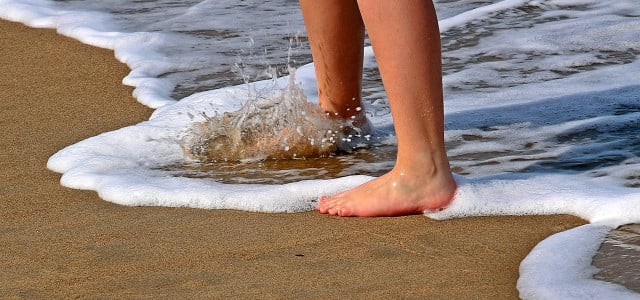
It is possible to relieve phlebitis with home remedies – but in principle it should be treated by a doctor. We’ll explain to you how to recognize phlebitis, why a visit to the practice is important and which home remedies help.
Inflammation is always a warning signal from the body that you should take seriously. That’s why it’s best to only resort to home remedies for phlebitis once you have a medical diagnosis. You can support the treatment with the home remedies presented here, but they cannot replace it.
For example, you can get quick relief with cold compresses if the inflamed area of skin hurts and stings. Sport and exercise as well as a nutrient-rich diet can keep blood vessels elastic and healthy for a long time.
Phlebitis: First have it examined, then use home remedies

(Photo: CC0/pixabayGreyerbaby)
In inflammation of the veins (phlebitis), the wall of the blood vessels is inflamed. Medically, two types can be distinguished.
-
Superficial phlebitis – The small veins just under the skin are inflamed. In this case, you can support the treatment of the phlebitis with home remedies.
-
Deep phlebitis – It affects veins that are deeper in the tissue. This disease is often accompanied by thrombosis. But even with superficial inflammation there is a risk of thrombosis. The blockage of the veins can also lead to a pulmonary embolism.
The Pharmacy Review lists varicose veins as a possible cause of phlebitis. They can lead to superficial phlebitis, which usually occurs in the legs. But long illnesses that require you to lie down and bacterial inflammation can also cause phlebitis.
According to the medical portal Netdoktor, there are typical signs of phlebitis:
- The skin around the vein hurts even when touched lightly.
- You often feel a stabbing or pulling pain.
- The blood vessels are clearly visible under the skin or are even swollen.
- The skin is often red and hot.
Home remedies for phlebitis: cold compresses
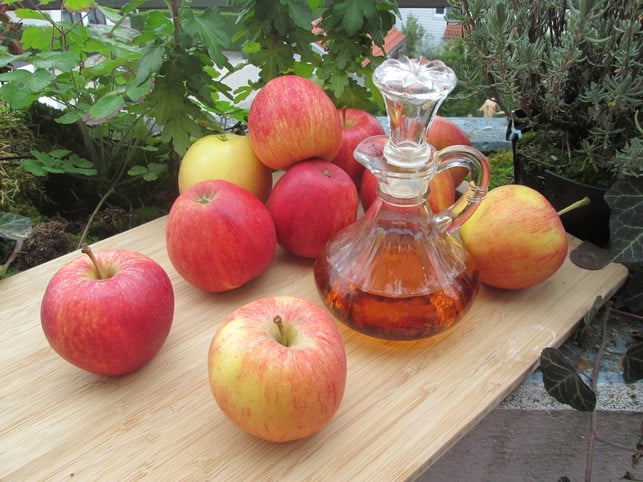
(Photo: CC0/pixabaywicherek)
The Apotheker-Umschau recommends wraps with cold water as a home remedy for phlebitis. The vessels contract due to the cold and thus activate the blood flow. This takes a little pressure off your legs and alleviates the discomfort. Attention: If you have an acute inflammation, you should avoid taking a hot shower or bath.
For the wrap you will need a cotton cloth, for example a used, clean tea towel and possibly a terry towel.
- Fill a bowl with cold water.
- Dip the cloth in the water and wring it out so that it is no longer dripping wet. Wrap the damp cotton cloth around the inflamed area.
- Then it’s best to put your leg up. Place a terry cloth towel under the wrap to prevent your bed or couch from getting wet.
-
Renew the cool compress from time to time. You can apply the envelopes several times a day.
You can also add apple cider vinegar to the cold compresses. This home remedy for phlebitis is intended to increase the cooling effect of the moist compresses. You need two to three tablespoons of apple cider vinegar for a small bowl of water.
Home remedies for phlebitis: cooling compresses
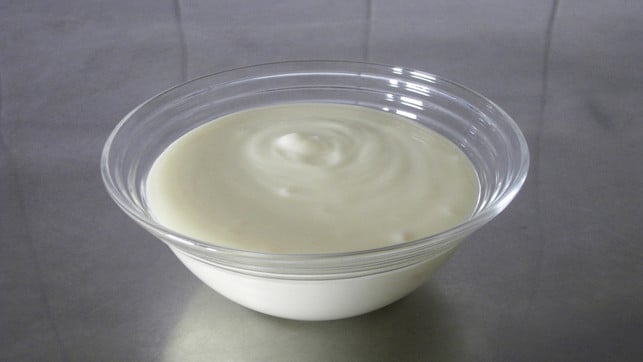
(Photo: CC0/pixabayProfet77)
Quark wraps are a traditional home remedy for phlebitis. If it feels good to you and there is nothing medically wrong, you can cool the heated skin with a quark compress. Ökotest reports that there are currently no studies on how quark affects the skin. However, folk medicine attributes curd to anti-inflammatory effects.
It is best to use low-fat quark for the wraps. You can either apply the quark directly to the skin or use a thin cotton cloth as a compress.
- Apply a finger-thick layer of curd to the skin. Then wrap a clean cotton cloth over the curd and put your legs up.
- You can use a discarded tea towel as a compress. Spread one half of the cloth with about a finger’s worth of quark and fold the other half over it. Place this compress on the inflamed area and cover everything with a second towel.
Clay wrap:
Alternatively, you can also use clay wraps as a home remedy for phlebitis. As with curd wraps, scientific studies on such home remedies are rare. However, the specialist portal for pharmacists Aponet mentions both wraps as a way to cool the skin if you have varicose veins. The clay porridge is supposed to alleviate the symptoms. You can get clay or healing clay at the pharmacy or drugstore. When using healing clay, make sure that it is intended for external use.
- Mix the clay with cold water. The porridge should be easy to spread, but not dripping.
- Use a compress cloth and proceed as with the curd wrap.
- When the clay is dry and begins to crumble, carefully remove the compress and wash the clay residue from the skin.
Prevent phlebitis with home remedies
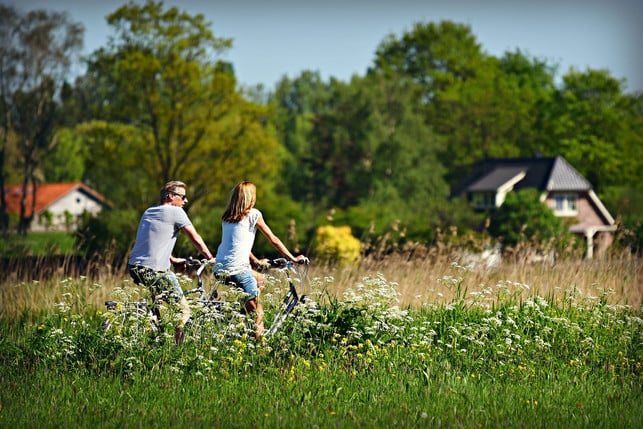
(Photo: CC0/pixabay/MabelAmber)
Home remedies not only help with existing phlebitis: there are also ways to prevent it in good time. Phlebitis usually does not occur suddenly, but rather develops slowly.
Varicose veins are an indication that the blood flow to the veins is impaired. Spider veins can be an even earlier indication of venous insufficiency. They arise when the elasticity of the tissue and thus also that of the veins decreases.
The risk of developing phlebitis in the future decreases if you have few or no varicose veins. A strong connective tissue is the best guarantee for this. You can strengthen the connective tissue with a few simple home remedies.
Movement:
- Exercise builds tight tissue that prevents varicose veins or venous insufficiency from forming. The Apotheker-Umschau recommends walking as often as possible to strengthen your veins. You should be moving for at least half an hour a day. Anyone who has to sit or stand for long periods of time at work should get their circulation going regularly with exercise.
- A few simple exercises are often enough to prevent varicose veins and thus phlebitis. Cycling or hiking are also good leg workouts.
By the way, doctors also recommend exercise instead of bed rest if you have superficial phlebitis. The blood should circulate. On the other hand, if you have deep phlebitis, you will have to lie down or be treated in hospital.
Alternating showers:
-
Netdoktor recommends alternating hot and cold showers to prevent varicose veins. The change in temperature trains the vessel walls. They expand with hot water and contract after a cold shower.
Attention: If your doctor has diagnosed you with superficial phlebitis, find out whether you should stop exercising or taking contrast showers.
Phlebitis – the right diet as a home remedy
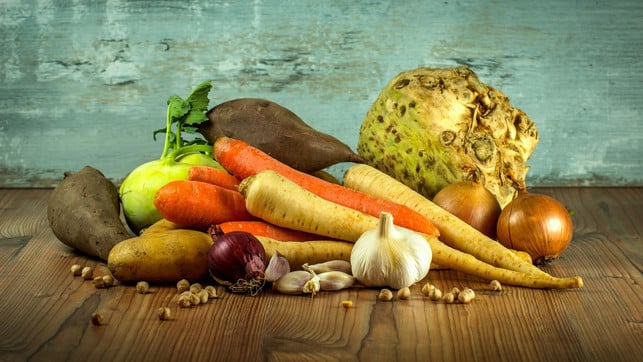
(Photo: CC0/pixabay/LubosHouska)
The right diet is a simple home remedy to prevent phlebitis from occurring in the first place or to help existing ones heal more quickly.
-
Water: Netdoktor recommends drinking enough water to prevent phlebitis. This keeps your blood liquid and prevents it from clumping. According to the German Nutrition Society (DGE), one and a half to two liters of water or unsweetened tea a day is generally sufficient.
- A balanced diet provides your immune system with lots of vitamins and antioxidants. This means your immune system can react better to inflammation.
-
Studies on rabbits indicate that garlic can also reduce the risk of thrombosis.
Netdoktor recommends stopping smoking to prevent phlebitis. There is also an increased risk if you smoke and take the pill at the same time.
What else you can do:
- Wear clothing that fits comfortably. Clothing that restricts you can hinder blood circulation.
-
Flat heels are better for beautiful legs in the long term than high heels.
- Netdoktor recommends walking barefoot as often as possible. This allows the blood to circulate unhindered to the feet.
- Do foot exercises every now and then. Simple exercises include rotating your ankles or reaching with your toes.
- If possible, put your legs up.
Read more on Techzle\.com:
- Remove calluses: These home remedies will make your feet beautiful
- Swollen legs: causes and what helps
- Tingling in the legs: causes and effective antidotes
** marked with ** or orange underlined Links to sources of supply are partly partner links: If you buy here, you are actively supporting Techzle\.com, because we then receive a small part of the sales proceeds. More info.